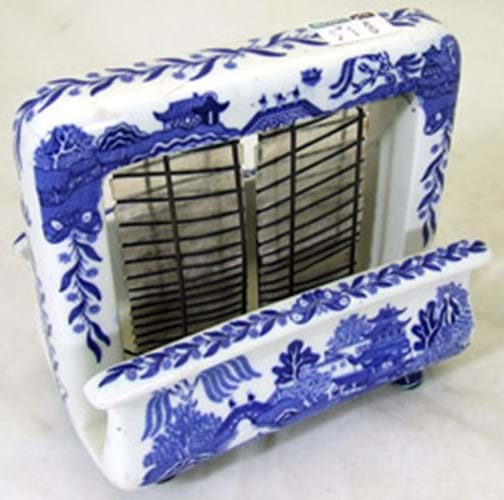
Electric devices for toasting bread were first used in England in the 1890s, but those toaster pioneers encountered a perennial problem - the elements would oxidise and burn out after just a few uses.
Indeed, it wasn't until the young Illinois inventor Albert L. Marsh was granted a patent in 1906 for an alloy of chromium and nickel that could survive thousands of heating cycles that the first commercially successful toaster would emerge. It was called General Electric D-12 and there is one (a model 3) in this Lincolnshire collection estimated at £300-500.
But traditionally the most coveted toaster for collectors today is the Toastrite, which is distinctive for its insulating porcelain or 'Onyxide China' exterior. It was made about 1928 by Pan Electric Mfg. Co. of Cleveland and - sold originally with a matching breakfast set - came in seven colours including Blue Willow, Pink Willow, blue, green, orange, yellow and mother-of-pearl.
Brown & Co's vendor, a lady who has been collecting for 25 years, owns one in the Blue Willow pattern that is expected to bring £250-350.
The Toastrite is what collectors call a 'percher' - a toaster where the bread simply leans against the heating element. Other terminology now familiar to Brown & Co specialist Fred Kirkby following an evening surfing the internet include: 'pinchers' (holding the bread between two elements), 'flatbeds' (operating like tables), 'turners and swingers' (with a basket that swings out and rotates), 'floppers' (with doors that drop open), 'droppers' (the toast drops down), 'tippers' (the bread is tipped out) and the familiar 'pop-up'.
The website www.toaster.org, a site devoted to educating, entertaining, and enlightening visitors about the history and cultural importance of the bread toaster, is particularly useful on such matters. Contact 01652 650172.
By Roland Arkell




